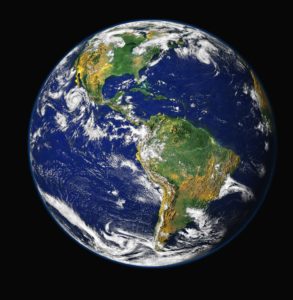 Going forward, will we even know what is going on in the atmosphere regarding carbon dioxide and other greenhouse gases? Will there be any data collected and scientific evidence regarding climate change? As you may have heard, all climate change research and knowledge is being eliminated and erased. The words climate change and greenhouse gases are not to be spoken or written according to the US government.
Going forward, will we even know what is going on in the atmosphere regarding carbon dioxide and other greenhouse gases? Will there be any data collected and scientific evidence regarding climate change? As you may have heard, all climate change research and knowledge is being eliminated and erased. The words climate change and greenhouse gases are not to be spoken or written according to the US government.
But even so, what is shocking to scientists is that 4 prestigious observatories operated by the US for decades, and which were instrumental in documenting the increase in greenhouse gases, are to be closed down by the US government. The Mauna Loa Observatory in Hawaii has been measuring CO2 levels in the air for over 65 years!
And yup, it has been documenting the steady increase, year after year, of CO2. Due to burning of oil, gas, and coal. In 65 years CO2 levels have increased from 316 ppm to more than 430 parts per million. This is a huge increase!
An article in The Conversation explains why carbon dioxide is so important - how it's needed for a habitable Earth, but too much carbon dioxide is bad.
"The reason carbon dioxide is so important is that this molecule has special properties. Its ability to trap heat alongside other greenhouse gases means Earth isn’t a frozen rock. If there were no greenhouse gases, Earth would have an average temperature of -18°C, rather than the balmy 14°C under which human civilisation emerged.
The greenhouse effect is essential to life. But if there are too many gases, the planet becomes dangerously hot. That’s what’s happening now – a very sharp increase in gases exceptionally good at trapping heat even at low concentrations."
From NY Times: After 7 Decades of Measurements From a Peak in Hawaii, Trump’s Budget Would End Them
More than 11,100 feet above sea level, surrounded by nothing but black rocks, white clouds and blue sky, the Mauna Loa Observatory is in a Goldilocks spot for studying the atmosphere.
The air that swirls around the isolated outpost located on a Hawaiian volcano is a mix from all over the Northern Hemisphere. That makes it one of the best places to measure greenhouse gases in the atmosphere. It is indispensable to scientists around the world.
The readings collected from Mauna Loa, starting in 1958, were used to create what is famously known as the Keeling curve. It’s an upward-swooping line that charts the steady rise of carbon dioxide over the past seven decades — the result of nations burning oil, gas and coal.
But President Trump’s proposed 2026 budget would put an end to Mauna Loa, along with three other key observatories and almost all the climate research being done by the National Oceanic and Atmospheric Administration.
The observatory is part of a global network of stations that monitor the atmosphere. The research performed at these labs lets scientists assess changes over the long term, figure out what caused the changes and make better predictions for extreme events like heat waves, droughts and floods. And the stations can help scientists tell which climate policies are working, which are not, and if global warming is accelerating.
“Why, for relatively little cost, would we want to lose that ability?” Dr. Graumlich said.
The same is true for planetary checkups, he said, and that’s what Mauna Loa provides. The average concentration of carbon dioxide, one of the main causes of climate change, has risen rapidly, throwing the planet’s natural systems out of balance. Mauna Loa’s records show it has climbed from 316 parts per million to more than 430 parts per million.
As important as the Mauna Loa Observatory is, it doesn’t work in isolation. To have a reliable and global picture of greenhouse gases in the atmosphere, scientists need to collect samples from multiple places. NOAA operates three other monitoring stations — one in Alaska, one in American Samoa and one at the geographic South Pole — to compile its global average carbon dioxide trend.
The president’s budget would close all four stations, eliminating the United States’ pole-to-pole view of greenhouse gases. They cannot easily be replaced. But the cuts are in line with the Trump administration’s dismissal of the risks of global warming and end federal efforts to reduce the emissions that are heating the planet.
NOAA also runs a “flask network” that collects air samples from all around the world, including remote places that lack the infrastructure to take measurements. These are processed at NOAA’s Global Monitoring Lab in Boulder, Colo., which would also fall under the budget ax.
Scientists at Mauna Loa and other observatories also track methane, a greenhouse gas that’s much more potent in the short term than carbon dioxide, as well as nitrous oxide, aerosols and ozone-depleting substances. They monitor for soot and other particulate pollution in the air and observe changes in solar radiation, weather and wind patterns.
